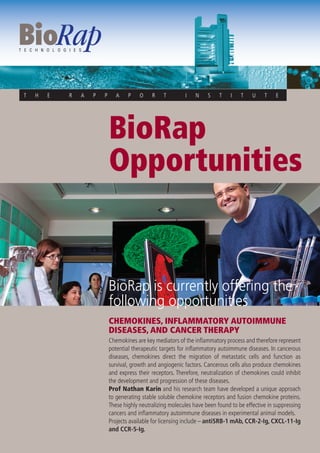The document discusses research from the Rappaport Institute focusing on developing new therapeutic approaches for various diseases. It describes projects involving generating soluble chemokine receptors to suppress cancers and inflammatory diseases, identifying molecules that can inhibit tumor growth and angiogenesis, developing inhibitors of the heparanase enzyme to prevent cancer metastasis, using autoantibodies as biomarkers for prostate cancer, and applying optogenetics approaches for cardiac arrhythmias treatment.



